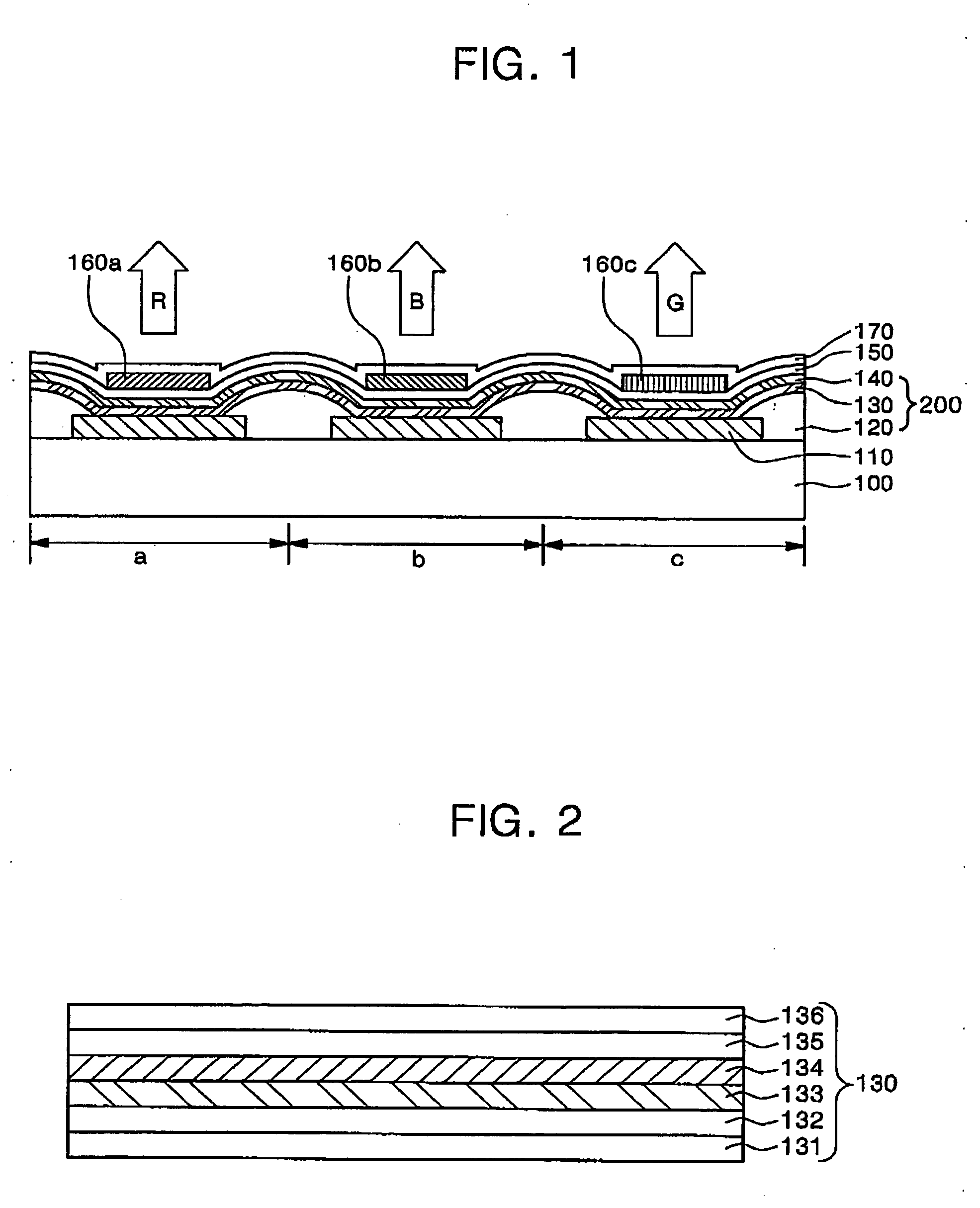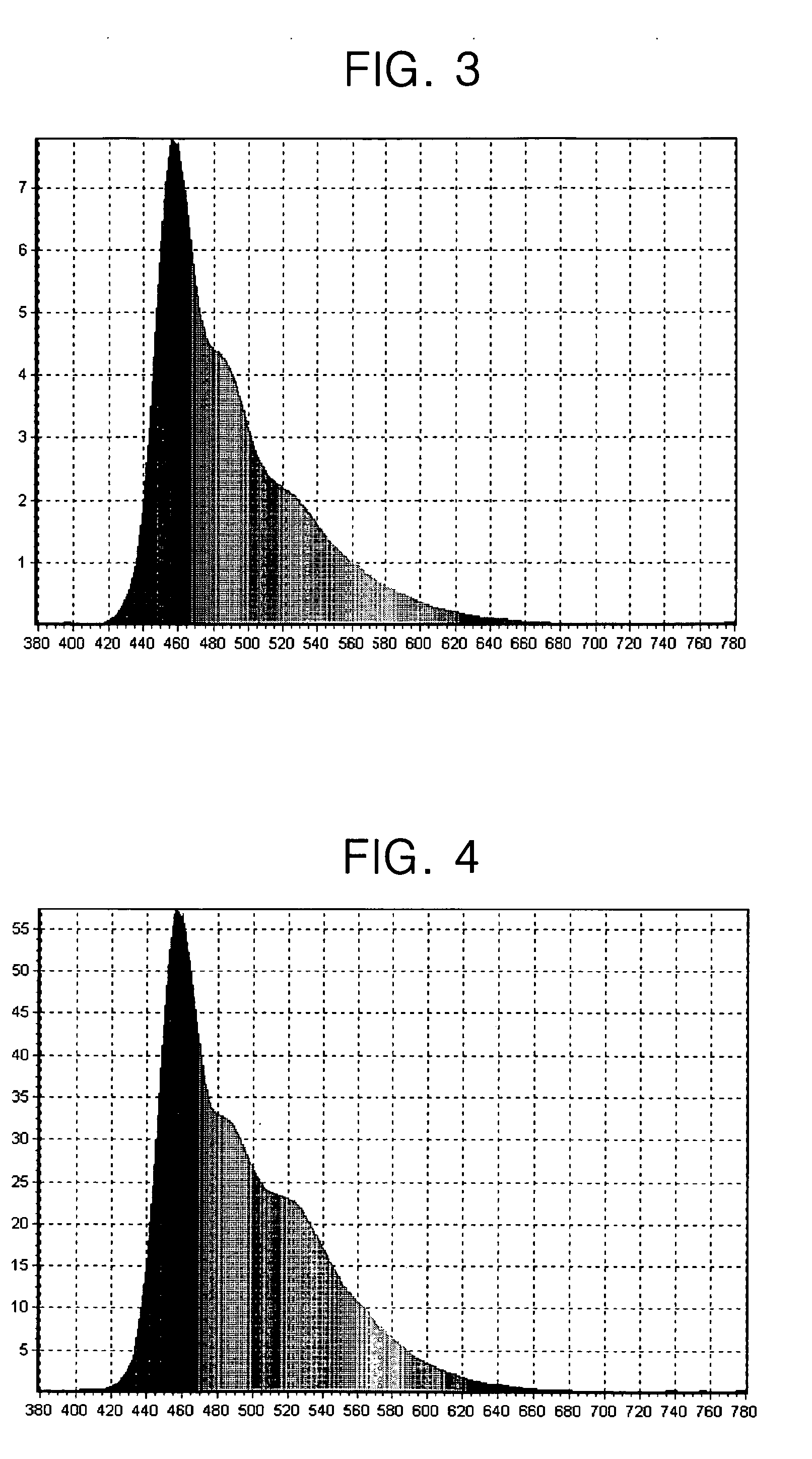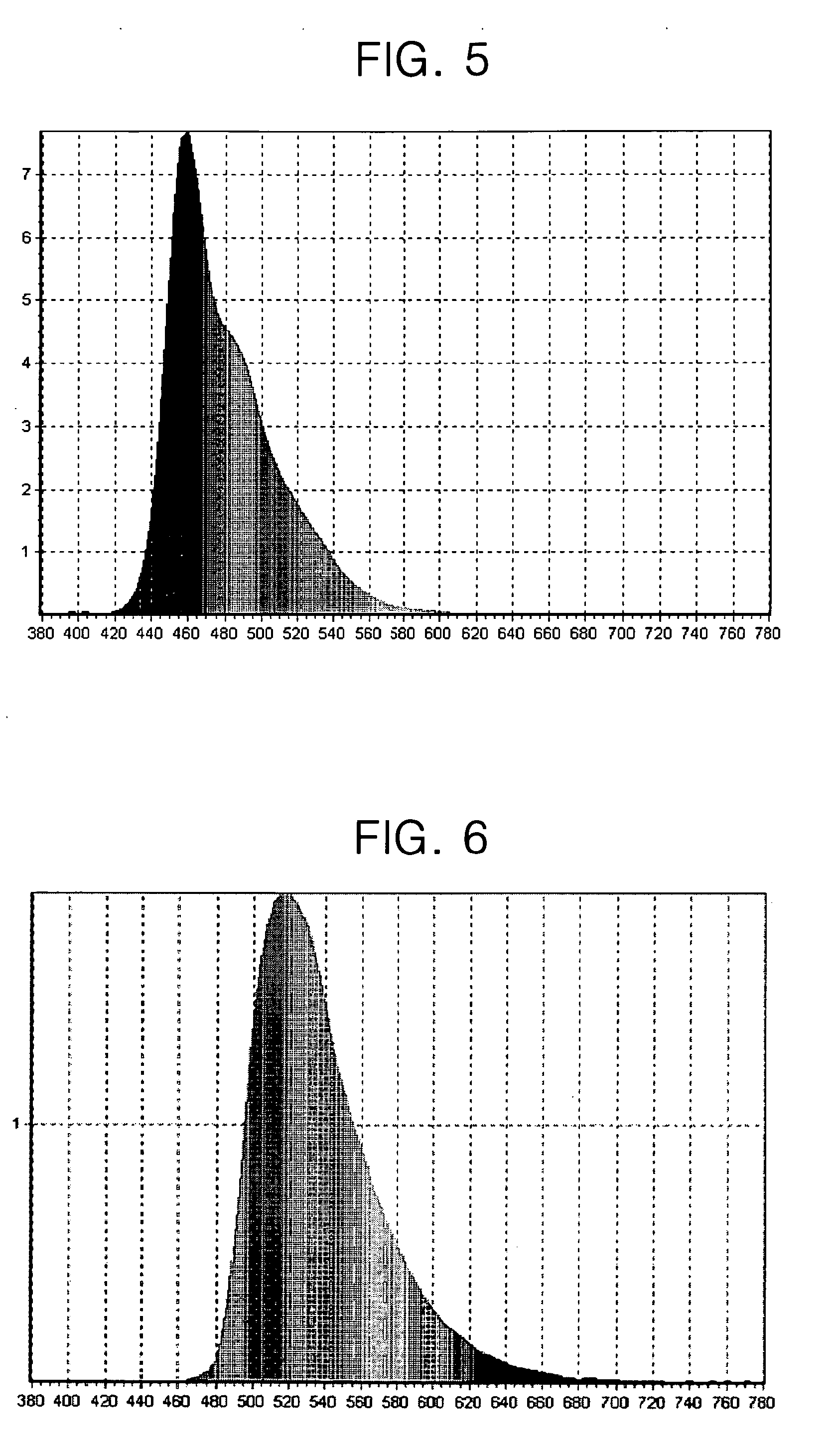Full-color electroluminescent display device and method of fabricating the same
- Summary
- Abstract
- Description
- Claims
- Application Information
AI Technical Summary
Benefits of technology
Problems solved by technology
Method used
Image
Examples
example 1
[0067] A 15 Ω / cm2 (1200Å) ITO glass substrate (Corning) having an anode electrode as a lower electrode was cut to a size of 50 mm×50 mm×0.7 mm, cleaned in an ultrasonic bath containing isopropyl alcohol and pure water for 5 minutes, irradiated with ultraviolet (UV) light for 30 minutes, and then exposed to ozone (O3) for cleaning. Subsequently, the prepared ITO glass substrate was loaded into a vacuum evaporation apparatus.
[0068] Next, IDE 406 (Idemitsu Kosan Co., Ltd.) was vacuum-deposited to a thickness of 600 angstroms onto the glass substrate to form a HIL and 4,4′-bis[N-(1-naphthyl-1-)-N-phenyl-amino]-biphenyl (N PB) was vacuum-deposited to a thickness of 200 angstroms to form a HTL. Subsequently, IDE140 and IDE105 (Idemitsu Kosan Co., Ltd.) were mixed at a weight ratio of about 98:2 and applied to the HTL to have a thickness of 150 angstroms to form a first EML capable of emitting blue light. Next, IDE 140 and C545T (Hayashibara) were mixed at a weight ratio of about 98:2 and...
example 2
[0072] An OLED was formed according to the procedure outlined in Example 1, except that a green color conversion layer, as opposed to a blue color filter, was applied to the OLED. In particular, polyvinyl chloride resin having a molecular weight of 45,000 and containing 0.5 wt % of coumarine 6 was dissolved in cyclohexanone to obtain ink having a solid content of 25%. Subsequently, the obtained ink was spin-coated onto the OLED and dried at a temperature of 80° C. for 1 hour to form a green OLED having a green color conversion layer with a film thickness of about 17 to about 18 μm.
[0073] The green OLED exhibited luminance of 1431 cd / m2, luminous efficiency of 7.16 cd / A at a voltage of 6.5 V, and had CIE color coordinates of x=0.271 and y=0.630, which confirmed green emission.
example 3
[0074] An OLED was formed according to the procedure outlined in Example 1, except that a red color conversion layer, as opposed to a blue color filter, was applied to the OLED. In particular, polyvinyl chloride resin having a molecular weight of 45,000 and containing 0.5 wt % of coumarine 6, 0.5 wt % of rhodamine 6G, and 0.5 wt % of rhodamineB was dissolved in cyclohexanone to obtain ink having a solid content of 25%. Subsequently, the obtained ink was spin-coated onto the OLED and dried at a temperature of 80° C. for 1 hour to form a red OLED having a red color conversion layer with a film thickness of about 17 to about 18 μm.
[0075] The red OLED exhibited luminance of 437 cd / m2, luminous efficiency of 2.19 cd / A at a voltage of 6.5 V, and had CIE color coordinates of x=0.622 and y=0.368, which confirmed red emission.
PUM
 Login to View More
Login to View More Abstract
Description
Claims
Application Information
 Login to View More
Login to View More - R&D
- Intellectual Property
- Life Sciences
- Materials
- Tech Scout
- Unparalleled Data Quality
- Higher Quality Content
- 60% Fewer Hallucinations
Browse by: Latest US Patents, China's latest patents, Technical Efficacy Thesaurus, Application Domain, Technology Topic, Popular Technical Reports.
© 2025 PatSnap. All rights reserved.Legal|Privacy policy|Modern Slavery Act Transparency Statement|Sitemap|About US| Contact US: help@patsnap.com



